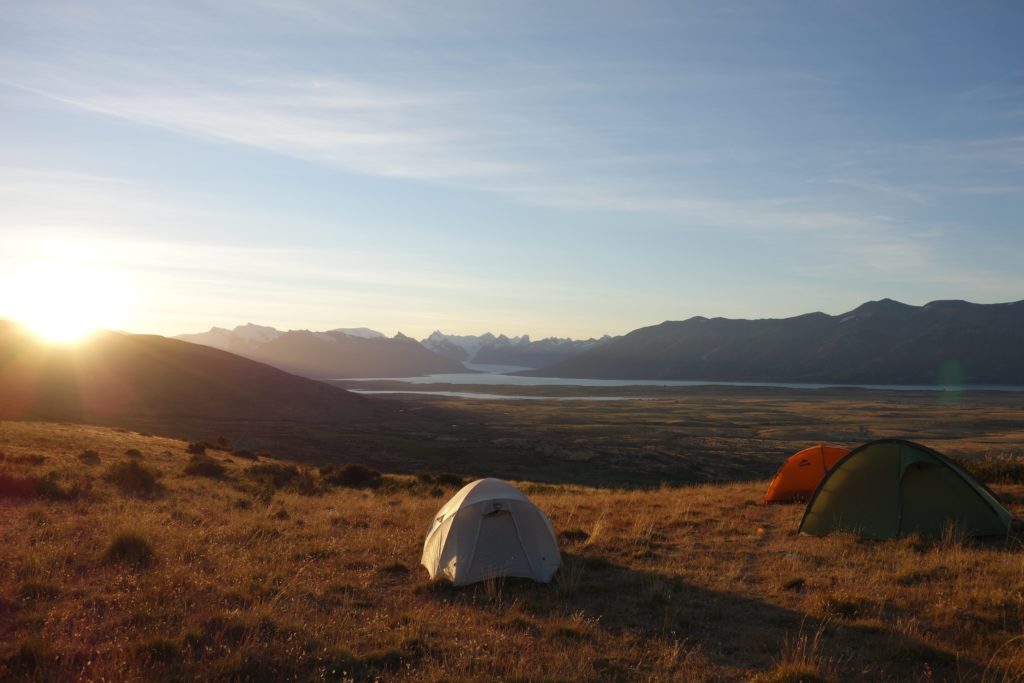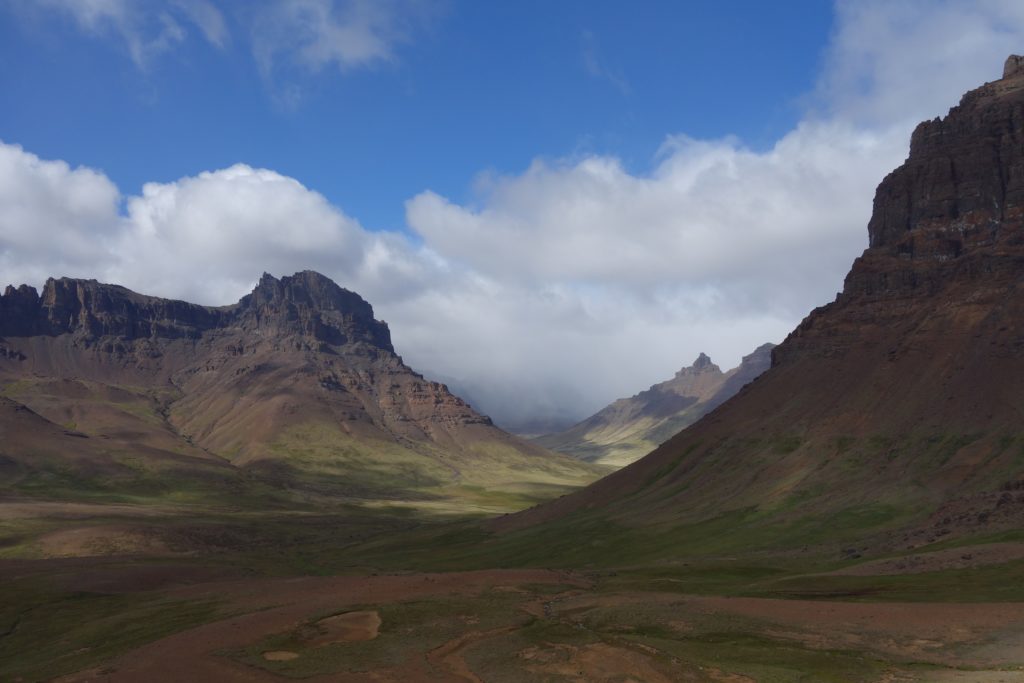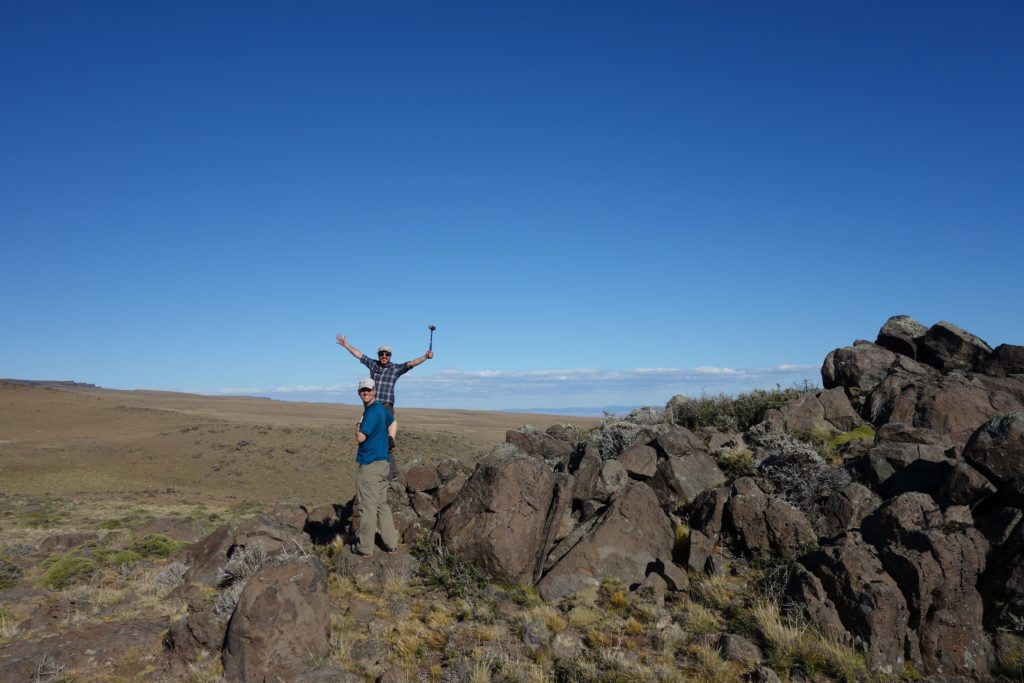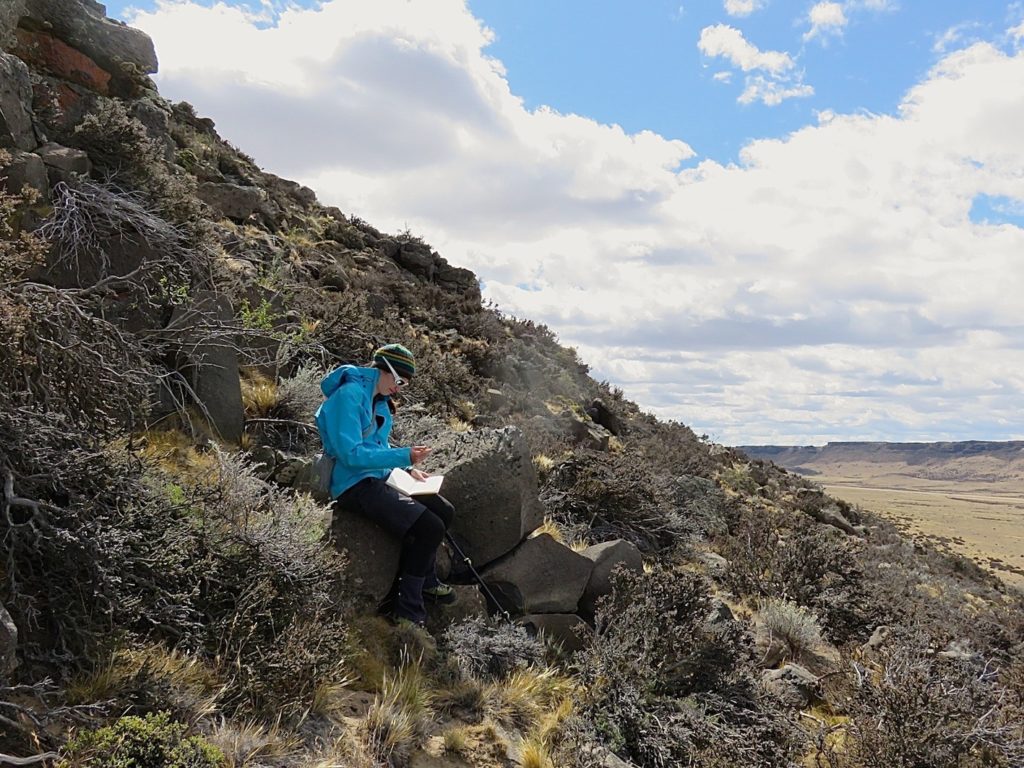Tanya is a postdoctoral fellow at the University of Lausanne in Switzerland. Originally from New Zealand, Tanya loves being in the mountains and solving geologic problems with mass spectrometry. You can read more about her research here.
In 2016, I spent a month doing field work in Patagonia. This wild southern land is home to some of the most spectacular and immense landscapes I have ever laid eyes on. At more than 50 degrees south, the curled southern tip of South America juts boldly out into the Southern Ocean, the closest any continent gets to Antarctica. This puts it smack in the path of the fierce westerly winds that dominate that part of the globe. We experienced every kind of weather possible in our month of Patagonian summer. Hot, sunny days that – unbelievably for these latitudes – were so calm that the peaks of the Andes were reflected in the vast glacial lakes below. And the following week: snow, with freezing temperatures and the strongest winds I’ve ever experienced. In the biggest gusts, we had to crouch down just to avoid being blown away. The air quickly became hazy with dust whipped up by the wind, and occasionally small tornados of tiny rocks and dust were picked up and whirled towards us. We would watch these approaching with fascination, then turn our backs and cover our faces as we were blasted by sand. Pretty extreme working conditions – but the spectacular geology justified it.
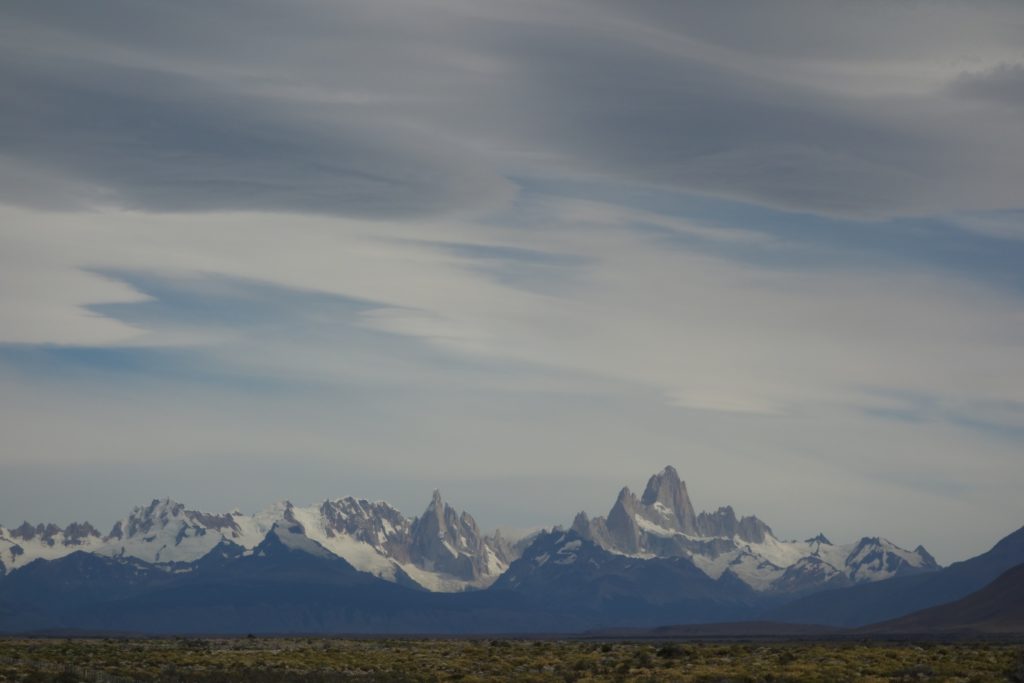
The Andes rising abruptly out of the plains: here, the Fitzroy massif (Argentina) under skies that herald changing weather.
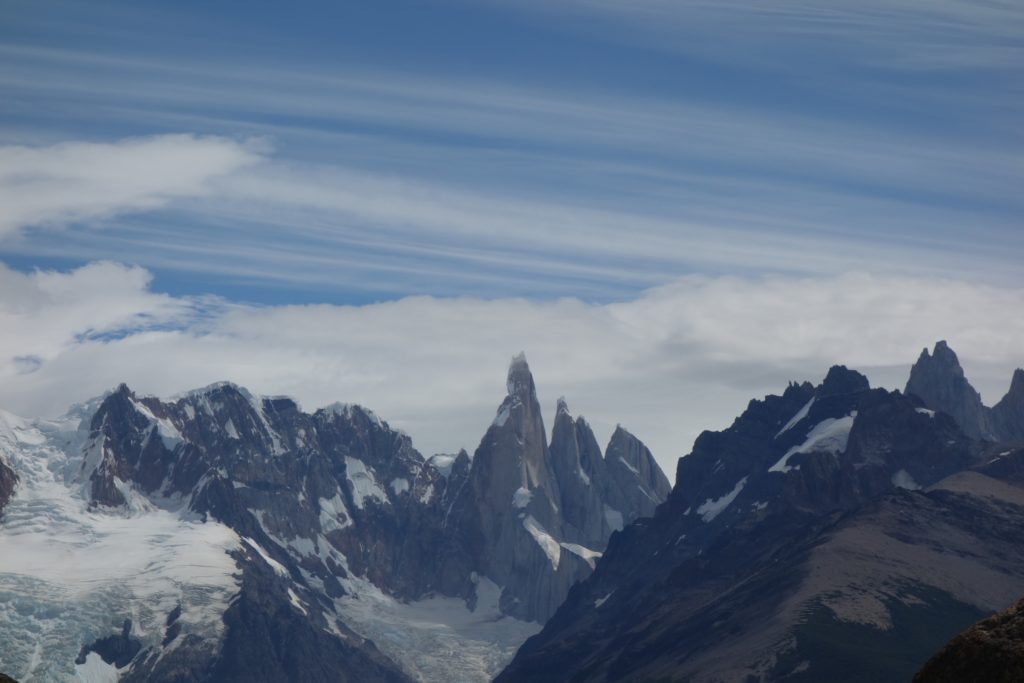
The Fitzroy massif (Argentina). This impressive collection of spires is made up of plutonic rocks that are intriguing for their location well east of the main subduction-related batholith.
The geology of the western margin of Patagonia is dominated by the products of subduction – where the oceanic crust beneath the Pacific Ocean is driven beneath the continental crust that makes up South America, producing volcanism that has been going on in one form or another all along the western margin of South America for the last 160 million years. This subduction system is particularly interesting because partway along the margin there is an active mid-ocean ridge being subducted. A mid-ocean ridge is the “conveyor-belt” type spreading ridge at which new oceanic crust is created, which being young and hot and buoyant is difficult to subduct. This has a profound effect on the subduction zone system, impacting everything from the amount and style of volcanism, to uplift rate and thus climate – but there is still a lot of controversy over exactly how all of these (and many other) parameters are interlinked. It is evident from the complexity of the present-day tectonic plates that lie beneath the oceans that ridge subduction would have occurred periodically in the past at different locations around the globe. The Patagonian margin gives us a rare and valuable opportunity to catch one of these systems in the act and unravel the complex web of causes, effects, and feedbacks caused by this meeting of two plate boundaries.
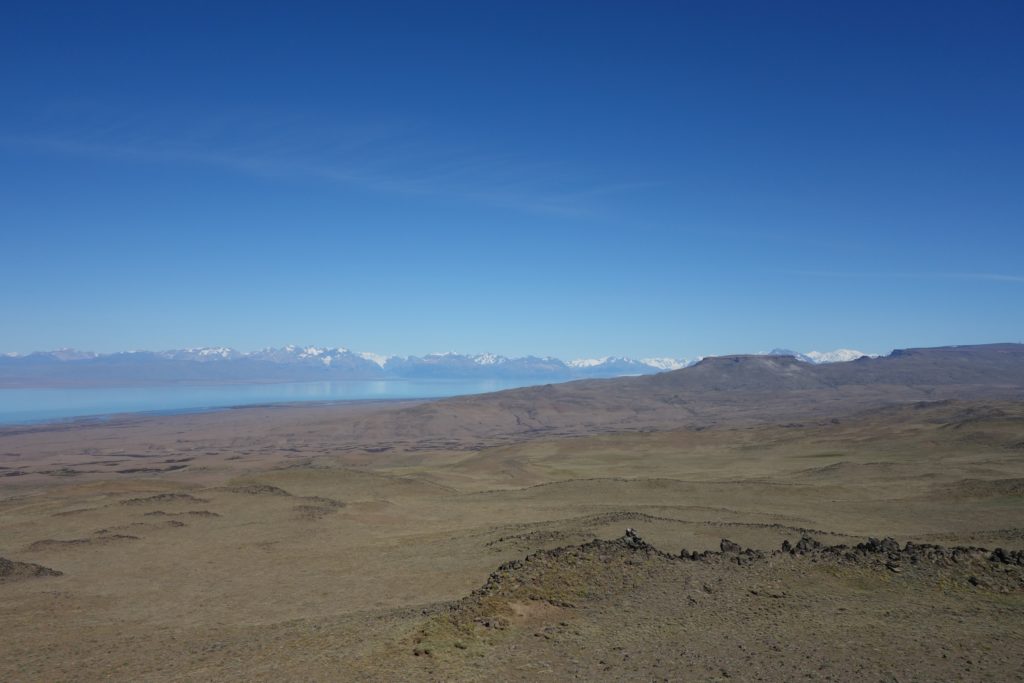
Basalt plateaus and dikes in the foreground; the Andes with its plutonic units in the background (and reflected in the glacial lake).
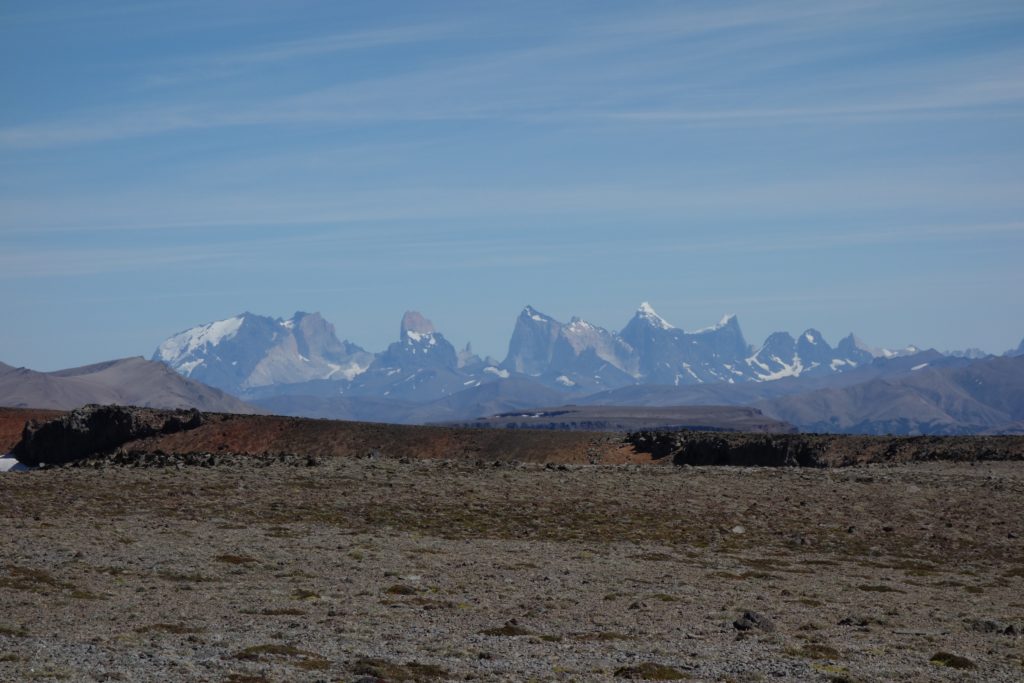
The peaks of Torres del Paine (background) seen from atop a basalt plateau (foreground). The Torres del Paine preserve an ancient magma chamber spectacularly exposed in 3-D. Even 150 km away, we could distinguish the intrusive magmatic rocks (pale colours) and the sedimentary rocks they were intruded into (dark colours).
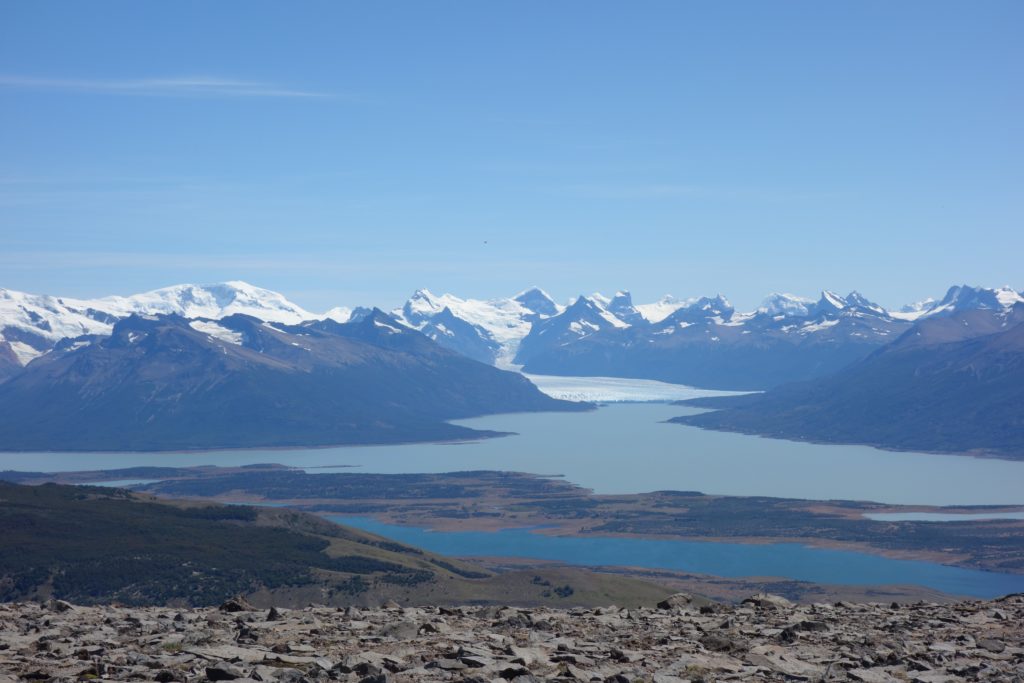
A landscape shaped by glaciers. Here the enormous Glaciar Perito Moreno flows into Lago Argentino. The distinctive blue colour of glacial lakes is due to suspended fine sediment produced by the powerful erosive force of the glacier.
In particular, my colleagues from the University of Lausanne and I were in southern Patagonia to study a number of plutonic and volcanic units formed around the time of the ridge subduction. My work, in collaboration with Othmar Müntener, is on a number of small plutonic units from the Torres del Paine area. These slow-cooled igneous bodies are in an intriguing position, some 100 km inland of the main magmatic products of the subduction zone, making their origin enigmatic. I am measuring their Hf isotope composition, which is a kind of “geochemical fingerprint” for the source of magmas. Identifying how much recycled crustal material has been incorporated into melts from the mantle in this unique part of the subduction setting, and how this contribution has changed over time, can give us new insights into the evolution of the system around the time of the ridge subduction. In addition, the Torres del Paine preserves a spectacularly exposed example of a layered intrusive complex, which allows us to examine geochemical variability on much smaller timescales – between different pulses of magmatism within a single intrusive complex. On this trip, I also accompanied my colleagues Davide Roggero and Sébastien Pilet on their fieldwork “just next door”, where they are studying large basaltic plateaus erupted inland of the plutonic rocks to better understand their origins. These volcanic plateaus represent a very different style of magmatism and are generally thought to have been produced as a result of the subduction of the spreading ridge.
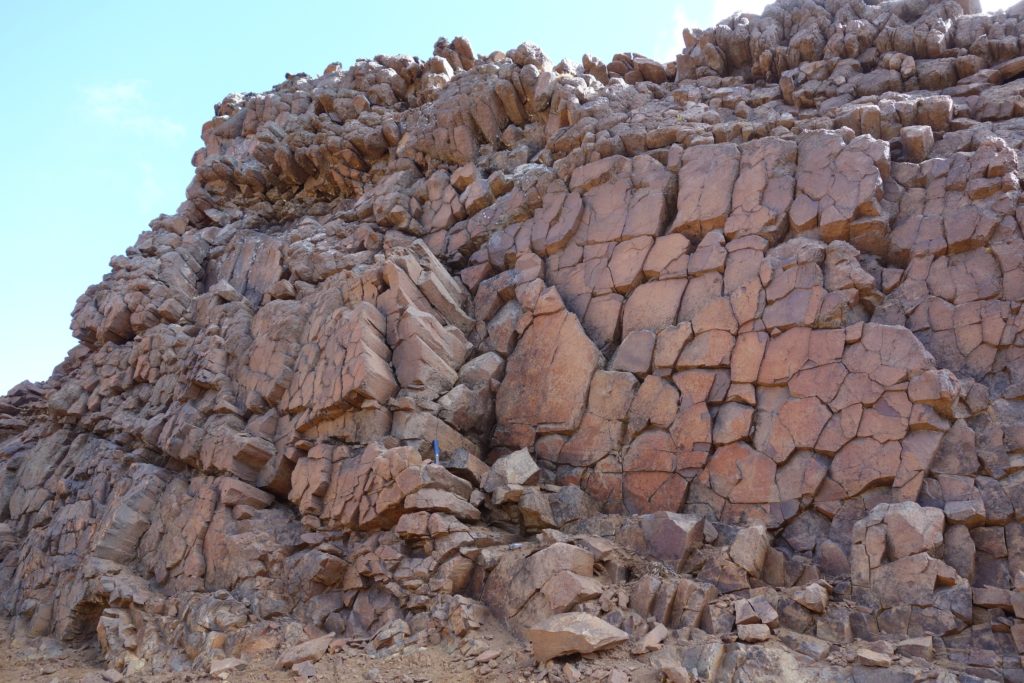
Cooling columns in a basalt dike – similar to the famous Giant’s Causeway in Ireland, but this time horizontal, as these structures form perpendicular to the cooling surface.
The areas we were working in were fairly remote, so just getting to the sampling sites required a lot walking, and we spent most of our month camping in remote locations. This was a privilege of its own – walking on a grassy plateau with views only of the basaltic meseta and the first peaks of the Andes rising from the plains; the slow march of the southern hemisphere constellations across the most spectacular night skies I have seen. Such walking-intensive fieldwork is slow and physically demanding – especially when you get over-excited sampling then have to carry all of the rocks back to camp. But there’s something to be said for spending weeks immersed in the landscape you’re studying, and long days walking provide an excellent opportunity to reflect on recent observations and discuss geology together at length. In spite of all the time I had spent reading literature at my desk previously, the geology of the region first really started to make sense to me from the vantage point of a basaltic meseta, looking out across these vast, wild landscapes.
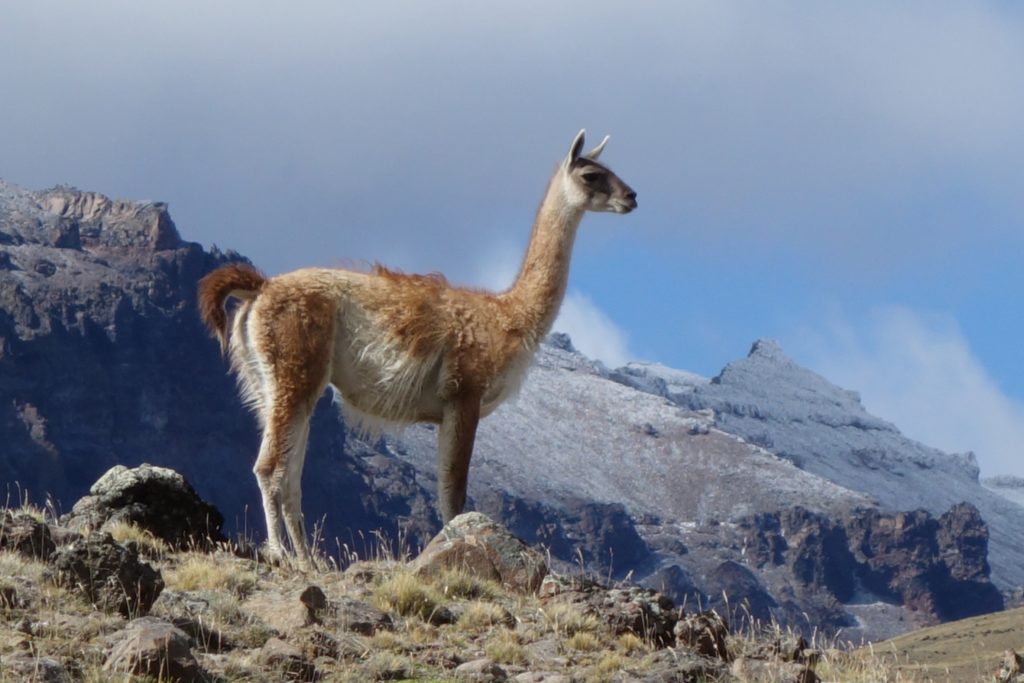
Guanaco! The local Patagonian ungulate, and just one of a host of interesting wildlife we encountered: condor, armadillo, parakeet, ptarmigan, fox, ñandu (like an emu)…
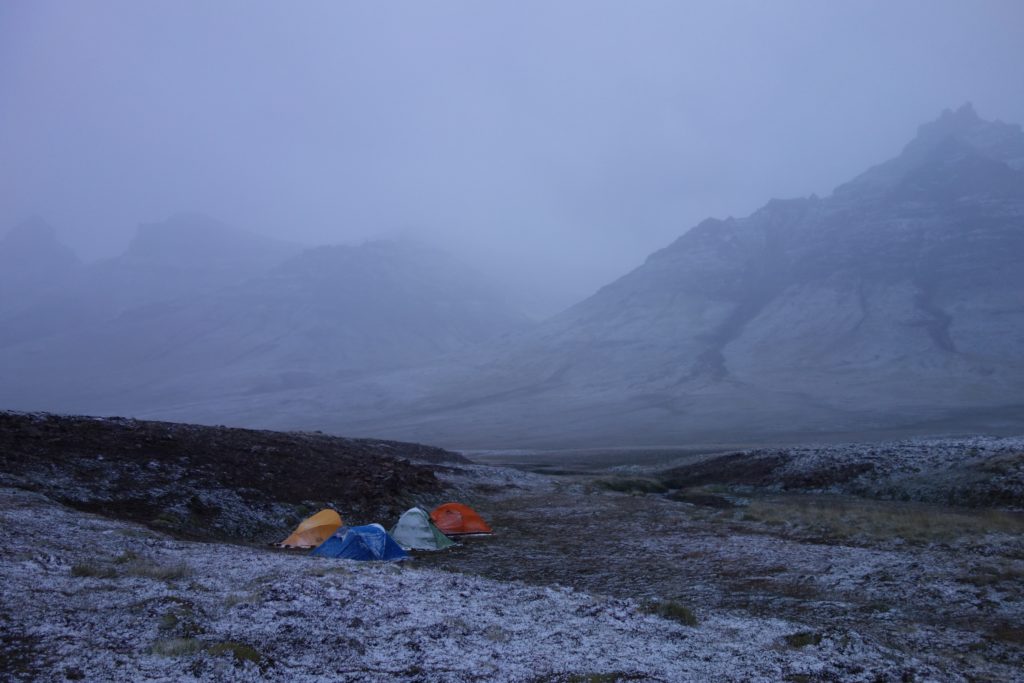
Our wildest and coldest campsite, which we walked into carrying all our supplies for a few days. We awoke to find the rain had turned to snow overnight.
![]() This work is licensed under a Creative Commons Attribution-NonCommercial-ShareAlike 4.0 International License.
This work is licensed under a Creative Commons Attribution-NonCommercial-ShareAlike 4.0 International License.

